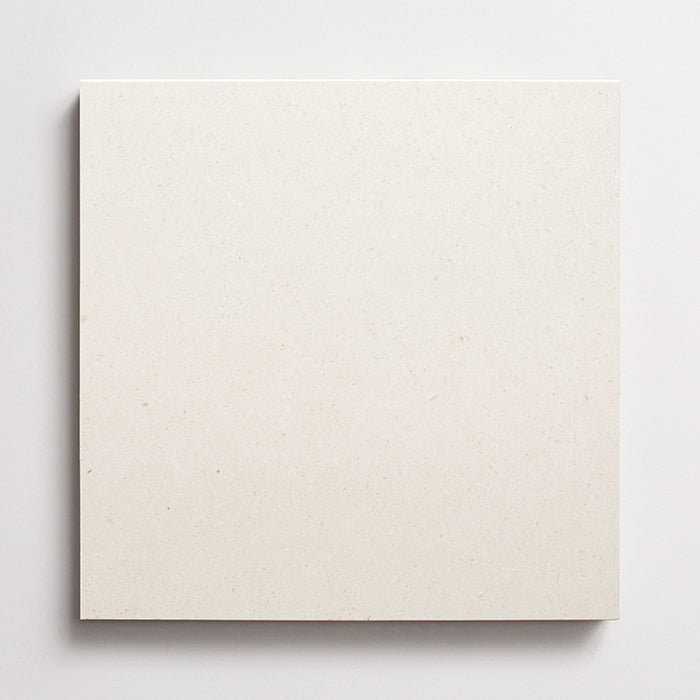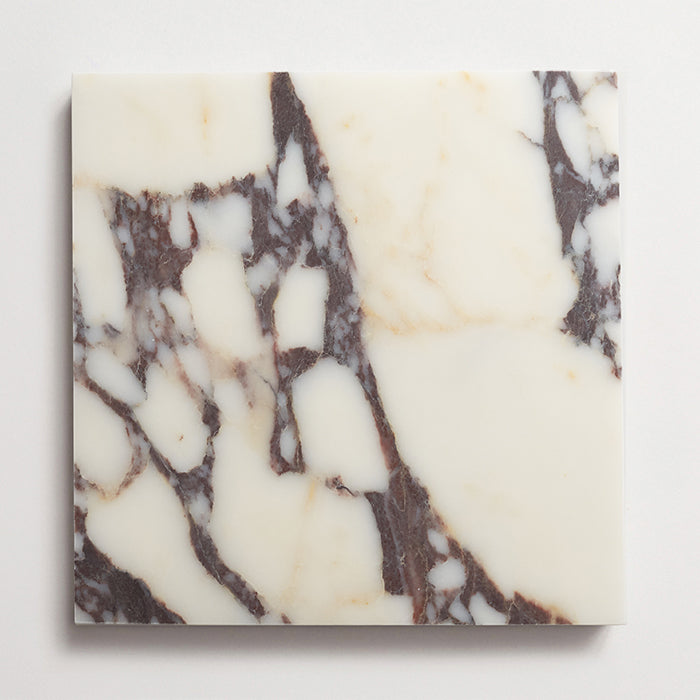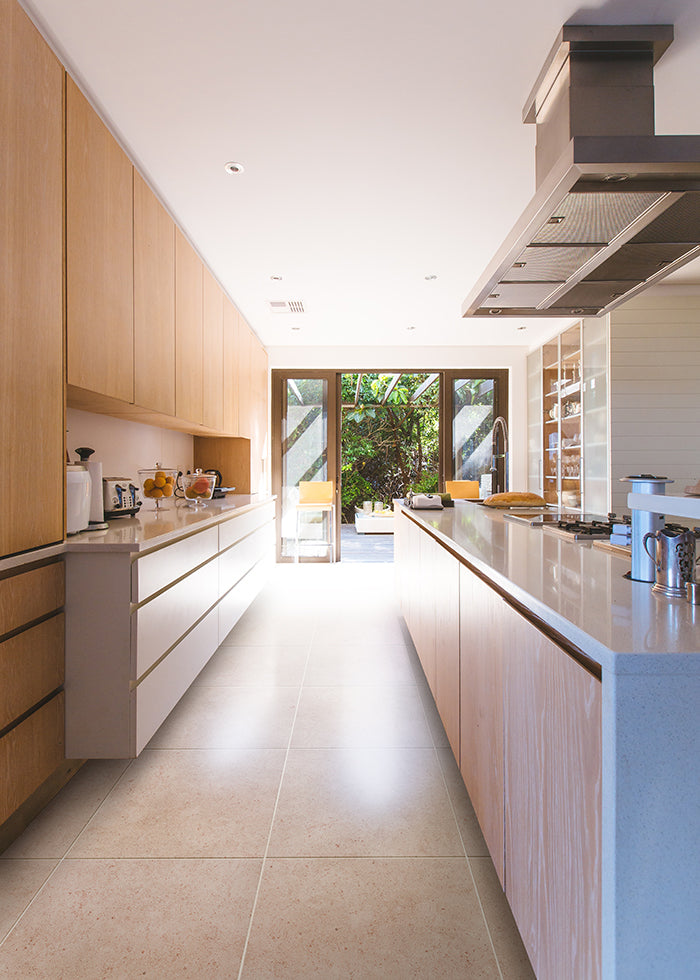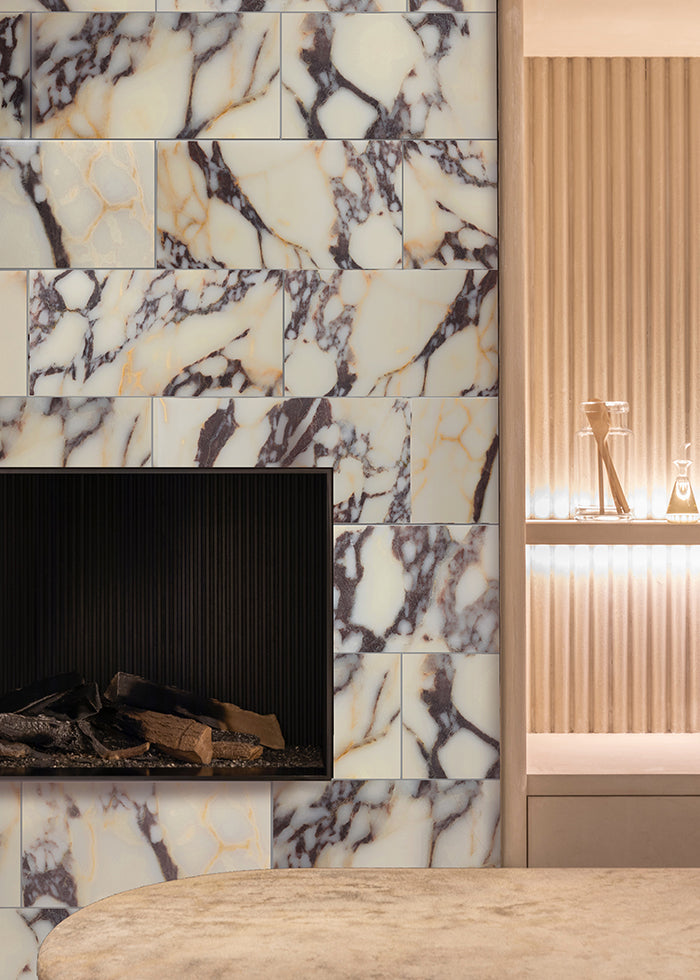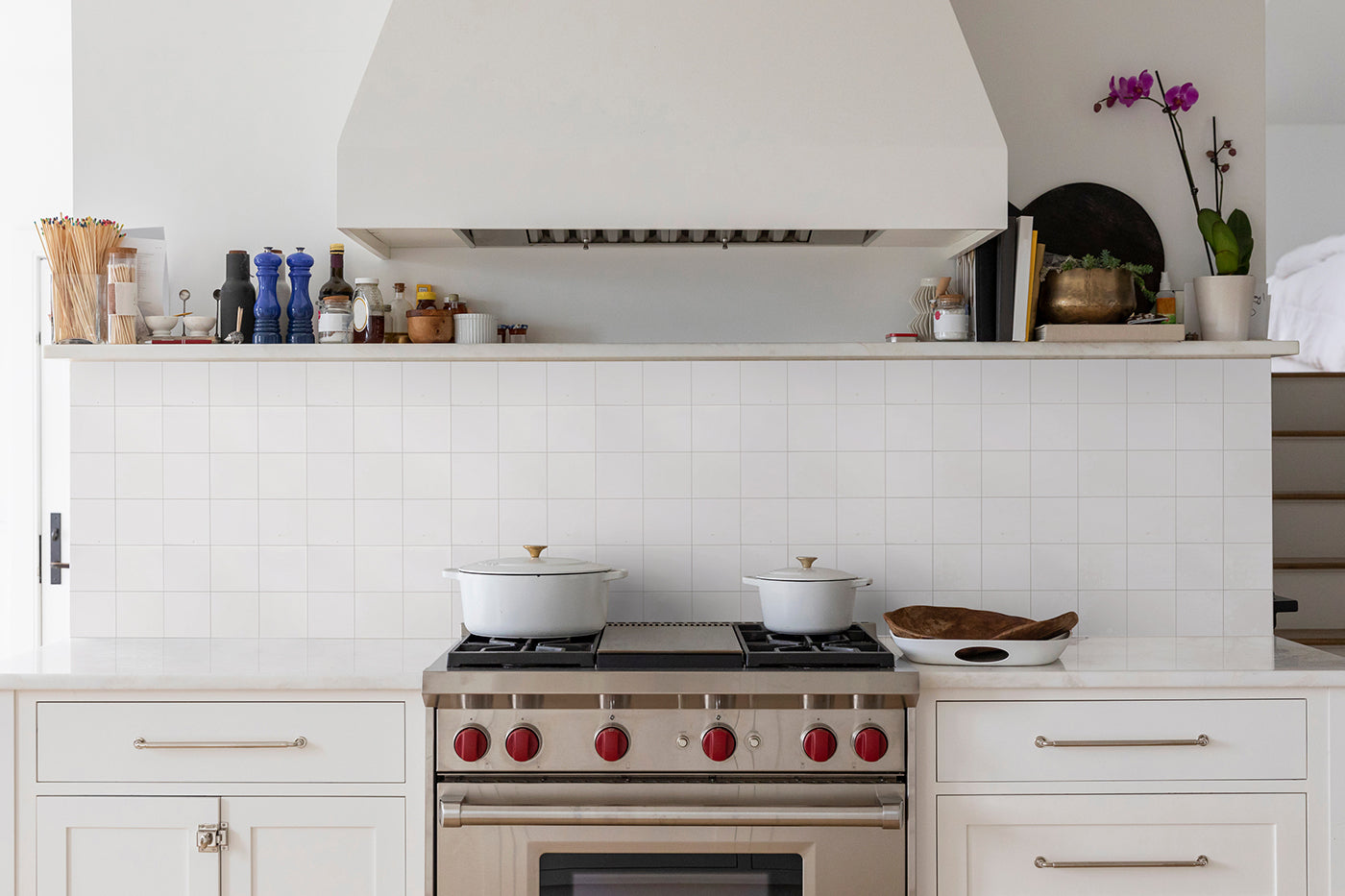what is honed tile? digging into the stone finish
by clé tile | published: Jul 11, 2025
wwhen it comes to a tile’s finish, you’ve got options. there’s glossy ceramic, unglazed cement, matte brick and terracotta… but what about honed tile?honed is a classic finish for natural stone tile, be it marble, travertine, limestone, or terrazzo. the goal of honing tile is to bring out the intrinsic characteristics of the stone, and oh, is the process worth it. that’s why most stone tile here at clé is honed. (keep in mind, because most stone resources polish their stones, honed stone surfaces come at a premium.)
below, all about the benefits of honed tile — and how you might use it in your space.
discover our curated collection of artisan stone tiles, where every surface tells a story.
first: what does honed tile mean?
when stone tile is honed, it undergoes a light sanding process to create a consistent, smooth texture. depending on how long the tile is worked, the finish can range from matte to satiny (but never all-out shiny). this finish creates an understated look that celebrates stone in all its natural beauty.
so, what is a honed finish?
a honed finish is the result of grinding the stone’s surface with abrasives to remove any high spots, pits, or natural blemishes, yielding a uniform, low-sheen appearance. unlike polishing, which uses progressively finer abrasives to achieve a glass-like shine, honing stops short of full gloss, preserving a tactile, velvety surface that still reveals the stone’s natural color depth and veining.
this process not only enhances subtle tonal variations but also offers a more slip-resistant profile, making honed finishes a more practical choice for tiled flooring (in addition to walls).
what types of stone can have a honed finish?
many natural stones lend themselves beautifully to a honed finish, each bringing its own palette of color, texture, and character. below, dive into the most popular honed stone varieties.
marble
marble’s timeless elegance shines with a honed treatment that softens its dramatic veining into a more subdued statement. whether it’s the crisp white of carrara or the purple blush of calacatta viola, honing reveals the stone’s natural translucency without a high-gloss glare.
limestone
limestone’s subtle, earthy hues and fossilized patterns take on a refined, tactile quality when honed. the gentle sanding accentuates its warm creams, beiges, and greys, offering a matte finish that feels almost fabric-like underfoot.
slate
while we prefer giving slate a gauged finish to preserve its natural feel and give it an even thickness, slate’s naturally cleft texture can be smoothed during the honing process. this gives it a flatter, more uniform surface while still retaining some slight undulations that hint at its layered formation.
travertine
travertine’s signature pockmarks and troughs are lightly filled and narrowed when honed, resulting in a serene, almost suede-like finish. subtle veins of gold, cream, and ivory dance across each tile without the mirror-like reflectivity of a polished surface.
terrazzo
honed terrazzo showcases its colorful aggregate — chips of marble, quartz, and glass — set within a smooth cement base. the honing process levels the surface so that each fragment peeks through without sharp edges, creating a silky mosaic of scattered color flecks.
looking for stone finishes that shape light and surface with quiet strength? explore clé’s collection of natural stone tiles.
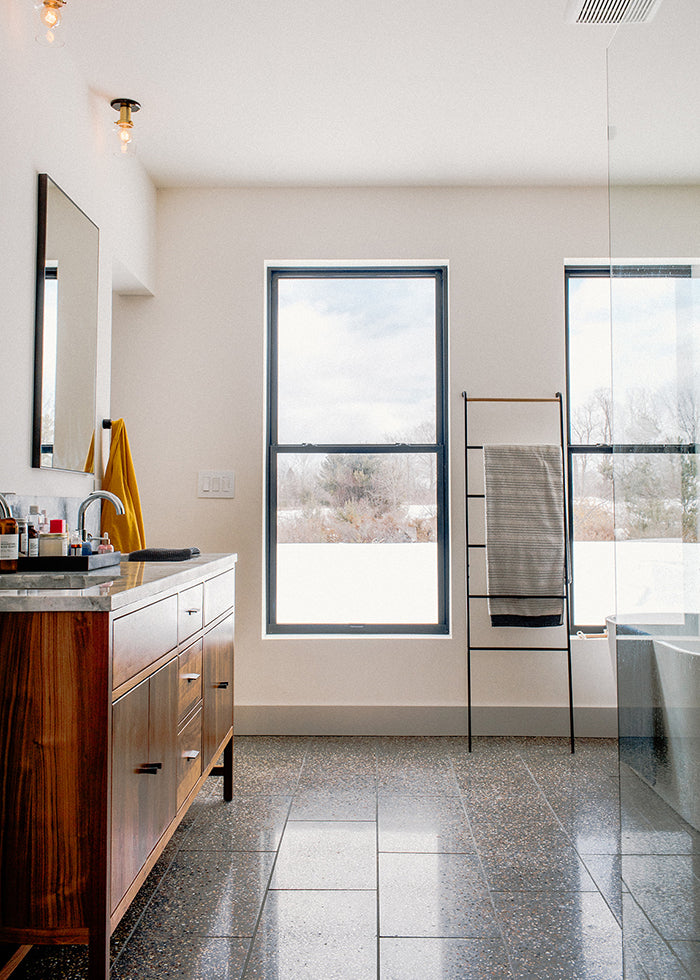
clé forage terrazzo 12x24 in charcoal. Design: Kate Smith / photo: XOme studio
advantages of honed tile
honed tile offers a multitude of benefits, so we’ll get right to it.
subtle beauty
we love a honed finish because it brings out all the inherent beauty that makes stone, well, stone. unlike polished tile, whose highly reflective surface can create a glare, honed tile gives off a softer, more diffused effect. this keeps the focus on the stone itself, and it works especially well in rooms with abundant natural light.
versatility
honing has the effect of modernizing a stone’s surface, allowing it to pair with a wide range of design styles. you’ll find honed tile in a variety of materials, too, from marble and limestone to travertine and terrazzo. there really is a stone for every project.
reduced glare
one of the standout qualities of honed tile is its ability to soften light. unlike polished finishes that reflect and bounce light around a room, honed surfaces absorb it, resulting in a more diffused, natural effect. this makes honed tile an especially appealing choice for spaces with ample sunlight or for creating a calm, grounded atmosphere.
scratch resistance
while scratches, scuffs, and other wear and tear may still show with this type of tile, it can still disguise these marks. that makes it a great option for high-traffic areas (even commercial areas). it’s worth noting that honed tile needs to be resealed anywhere from every six months to every two years, depending on where it is installed.
better traction
honed tile is pleasing to the touch, and it has greater slip resistance than polished tile. so, whether you’re choosing tile for a kitchen floor you’ll be walking barefoot on, or you want a stone shower floor tile that can safely get wet (when properly sealed, of course) a honed finish could be your best bet.
how is honed tile different from other tile finishes?
a honed finish differs from other tile finishes in a number of ways — looks, for starters.
honed vs. polished tile
polished tile is different from honed tile in that it’s shiny and glossy in appearance, rather than subtle and matte. leather is a good comparison — polished stone is similar to polished leather finishes — shiny, reflective, and more intense colors. whereas, honed stones showcase a more suede-like finish; a softer look and feel, non-reflective and an overall warmer feel than polished stone.
it's important to note that you will sacrifice a more intense coloring with honed tiles, but it's the “quieter” finish of honed stones that makes them much more elegant.
in addition, polished tile generally does not offer as much slip resistance as honed tile (although honed tile doesn’t not always mean slip resistance), and is more likely to show fingerprints, water spots, scratches, and other forms of wear.
honed vs. tumbled tile
tumbled tiles have been shaken with rock, sand, and other materials to give them a timeworn and imperfect look. this makes them more muted and rustic-looking than honed tile. you’ll most often find a tumbled finish in pavers, such as our pantry pavers.
honed vs. glazed tile
honed and glazed finishes aren’t really an apples to apples comparison because they are two different finishes for two different sets of materials. honing is for stone tile, while glazing is, for the most part, for zellige, terracotta, brick, and ceramic tile. glazing adds a protective glass or enamel coating to the tile (technically, it fuses with the claybody beneath, making it a single tile), which may be either matte or shiny.
honed vs. gauged tile
some stone tiles such as slate tiles are gauged, meaning the back of the tile has been ground down to create a flat surface and consistent thickness. generally, this isn’t something you look for in other stones such as marble and travertine.
honed vs. unfinished tile
unfinished tile is exactly that — unfinished. rather than undergoing a honing process to create a smooth and flat surface, unfinished tile embraces stone, terracotta, and other materials in their natural texture.
popular applications for honed tile
honed stone lends a natural aesthetic to any room it meets, and every tile has different veining and speckling from the next. it also happens to be both durable and easy to work with: great for any home.
kitchen
let’s talk kitchen walls and floors. honed tile is a great option for subtle and statement-making backsplashes alike, as you’ll find it in a variety of color options from crystalline white to cream with streaks of magenta, green, purple, and gold (as is the case with clé calacatta viola). it comes in a variety of shapes, including squares, planks, penny rounds.
if you’ve always dreamed of stone kitchen floors, you might look to honed tile as you explore marble, limestone, and terrazzo options.
bathroom
honed tile as a bathroom tile is an excellent choice. you’ll see it spanning entire walls and covering the entire floor. smaller honed tile options such as penny rounds and mosaic tiles work especially well on shower floors because the grout in between offers extra traction for wet surfaces.
foyer, fireplace, and beyond
honed tile can be used in every room. beyond the kitchen and bathroom, it can make a strong first impression in the foyer, grace the living room floor, adorn outdoor areas, and offer more slip resistance on mudroom floors than polished tile.
choosing the right honed tile
ultimately, choosing the right tile for your installation is a matter of personal preference. if you’re exploring honed marble tile, for example, you’ll find options that range from pure and minimalist to dramatic and high contrast.
tile size can also be a matter of preference, depending on the aesthetic you are going for. where slip-resistance is important, you may want to consider smaller sized tiles, as there will be more grouting to provide traction.
our best advice: order samples as you narrow down your options so that you can experience them in person. lighting affects how tile looks throughout the day, so be sure to study your samples in a variety of lighting conditions.
in addition, be sure to partner with an skilled professional who can do right by the tile you choose. cutting natural stone tile — and then installing and finishing it — requires extensive experience and care.
maintaining and caring for honed tile
honed tile is very durable in most spaces and requires very little upkeep. with the right sealing support, it can last for generations with minimal maintenance.
natural stone kitchen backsplashes and showers need an impregnating sealer to prevent stains from acidic substances. additionally, porous materials like marble and limestone should be resealed regularly. how often you reseal ranges depending on the material and how often it is exposed to moisture, so be sure to consult your contractor here.

